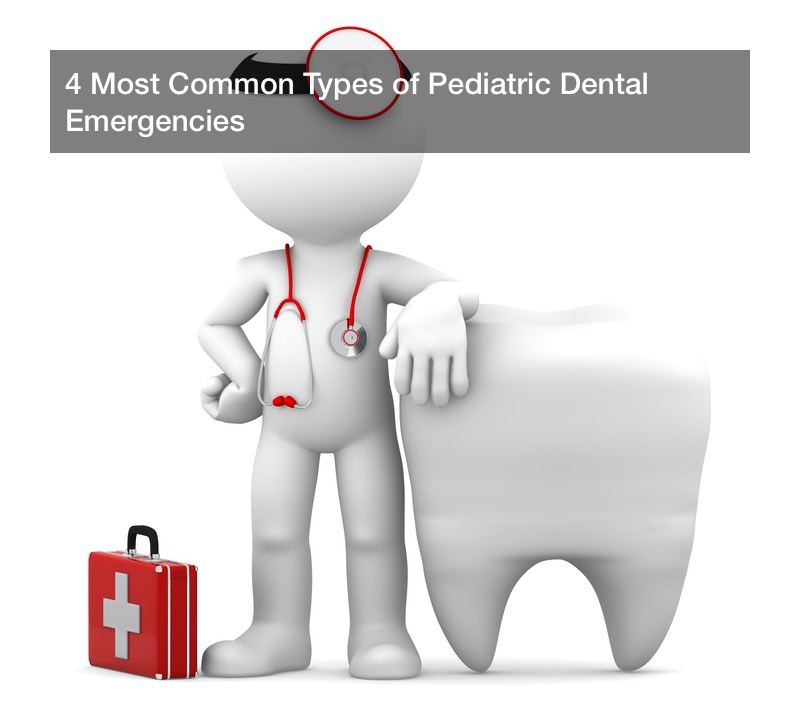4 Most Common Types of Pediatric Dental Emergencies


As a parent sometimes it becomes difficult to keep track of your children when they’re constantly running and engaging in all sorts of mischievousness. Even on close supervision, children may still fall and injure themselves in the process of playing. Mouth injuries are the most common as a result of slips and fall, and therefore understanding what to do during a pediatric dental emergency can help alleviate pain and prevent tooth loss. The following are some of the common pediatric dental emergencies you should know, and the best measures to consider for each case.
Tooth Avulsion (Knocked Out Tooth)
If a kid falls and hits the ground mouth first the chances of knocking out teeth are high. It’s very painful for kids as it is for adults, especially if it’s an avulsed permanent tooth. In this case, the first you should probably do is trying to save the tooth for later reimplantation. However, reimplanting avulsed deciduous teeth is not recommended as it can cause further damage to the tooth bud hence affecting the growth of a permanent tooth.
Depending on the gravity of the damage caused, your pediatric dentist will always try to salvage the knocked-out adult tooth by reimplanting it back. This dental emergency procedure is highly successful but it should be conducted as soon as the avulsion occurs. What to do in the event your child has a knocked-out tooth.
Locate the missing tooth if it has completely come off, or gather the parts of a tooth and preserve them in some milk.
If you can’t recover it, then it warrants for a dental emergency since the child could have swallowed the avulsed tooth. If you happen to recover an intact tooth, you should try putting it back in the socket but avoid aggravating more nerve pain. This will, however, depend if the child is in a lot of pain or not. Alternatively, store it in milk or saliva when going to visit your dentist.
Broken or Chipped Tooth (Crown Fracture)
Crown, a bone-like structure that forms the largest and the most visible part of the tooth is the most susceptible part to get damaged and it sustains a lot of the trauma from mouth injuries. The dentist will assess the gravity of the fracture and determine the best dental procedure for your child. Using dental xrays, the dentist can tell if the fracture is minor or a major one that needs pulp treatments.
For minor crown fractures, dental sealants are used to bond the fractures together and provide a protective shield over the tooth surface. The first thing to do when your child has broken tooth or crown fracture is minimizing the pain by applying an ice pack on the affected area. Alternatively, give your child pediatric approved pain medications.
Dental Intrusion (Tooth Pushed into Jawbone)
This is another common type of dental emergencies in children and it occurs when dental impact as a fall pushes a tooth upwards into the jawbone. Many times the trauma is so strong that it ends up fracturing the tooth’s socket and damaging its ligament. In case of a dental intrusion, seek a dental emergency where the dentists will devise the best course of action. Some dental intrusion will restore naturally, but to protect the tooth structure, a dentist can recommend endodontic therapy or a root canal, which not only saves the tooth but also eliminate future infections. But before visiting the dentist, it’ll be important to manage the pain with ice packs or recommended pain relief.
Normal Toothaches
Well, there is nothing normal about toothaches but sometimes kids develop tooth pains without no apparent reason. The pain will often fade by itself but some aches will last longer subjecting your child to a lot of discomforts. However, some toothaches may result from impacted wisdom teeth, tooth decay, and fractures. If the pain persists, it would be wise to consult with your child dentists for further examination.
A pediatric dental emergency is particularly important because kids cannot withstand extreme pain like adults. And the fact that kids are vulnerable to infections makes it even more complicated.